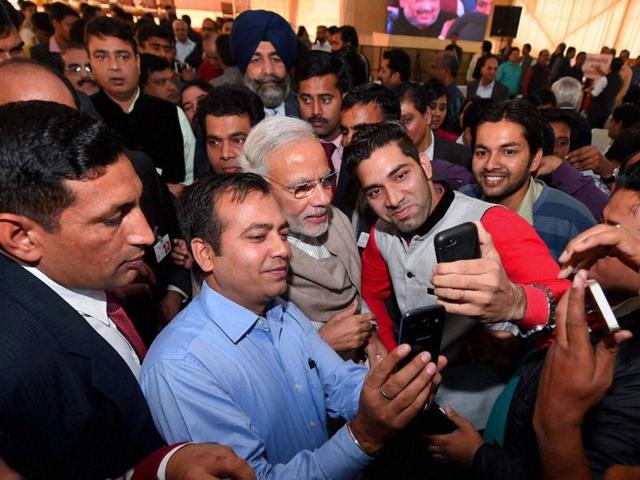At the end of December 2020, the Information and Broadcasting ministry circulated a 97-page document, ‘Report of the Group of Ministers on Government Communication’.

The report represented the efforts of nine key ministers anxious to find an answer to why the Narendra Modi government’s claims about the success of its policies was not striking a strong enough chord with the people of India.

The ministers took their cue from Modi himself, who apparently “guided the GoM with his insights and gave vital inputs”. Left unsaid was why the government’s policies needed such a hard sell if they are indeed benefiting the people.

They then collected the opinions of “eminent” persons, including Sangh parivar loyalists and, apparently, a number of journalists who work for ‘mainstream’ newspapers and television channels. Perhaps their participation emboldened the ministers to conclude that “feeding the media” a diet of “positive stories” the whole year round is a viable strategy.

After deliberations which lasted over five months, the GoM finally produced its report and ‘action plan’. At no point in the report is there any hint of introspection on the obvious: that if the government’s ‘achievements’ are not capturing the public imagination, this could be because those ‘achievements’ are themselves underwhelming. [Links on page above: https://bit.ly/3kNRWl5 and https://www.newslaundry.com/2020/05/26/the-embarrassment-that-is-pib-fact-check-who-fact-checks-this-fact-checker]

Instead, the entire focus of the ministerial exercise is on treating the negative perception which exists as a product of hostile media, hostile journalists who need to be “neutralised” and fake news. Accordingly, a whole action plan has been crafted to slay these imaginary demons. [Links on above page: 1. https://bit.ly/3sUkmg6 2. https://bit.ly/3sSoI7k 3. https://bit.ly/2OqAwyH 4. https://bit.ly/3bjkKPg]

The report lets the cat out of the bag as far as the recent cap on FDI in digital news media companies is concerned. This has nothing to do with creating a level playing field with print, as the government had claimed last year, but correcting the ‘bias’ in digital media. [Links on the page above: Links on page: 1. https://bit.ly/3riTm9w 2. https://bit.ly/3roQvMf 3. https://bit.ly/3c2f8rE]

The report is akin to a toolkit for media management, containing numerous suggestions and action points aimed at countering the impact of the digital news media.

The Wire is mentioned three times in the GoM report as an example of a media platform exerting a negative influence on the public perception of the government.

Though the report was likely not intended for external dissemination, its main recommendations were first reported by Anisha Dutta of the Hindustan Times in December 2020.

Two of the GoM’s suggestions raised eyebrows at the time – the need to identify negative and positive ‘influencers’, and make use of the services of regime friendly journalists who may have recently lost their jobs.

Last week, Hartosh Bal wrote a more detailed account of the GoM report in Caravan. And around the same time, the full document emerged on the internet.

One of the more telling features of the document is that it also reads as an internal document of the Bharatiya Janata Party. While that it hardly surprising, the constant reference in an official government document paid for by the tax-payer to the role the BJP and its leaders and press releases should play raises troubling questions about the extent to which the bureaucracy – which prepares and vets such reports – is now committed to the party in power.

The full GoM report contained details of inputs apparently provided by the journalists consulted. Though some of the journalists named rushed to distance themselves from the GoM report, none has so far admitted to formally complaining to the government about being misrepresented.

This public outing of names along with the report’s outlandish suggestions has created a piquant situation for the ministers involved. Each has tried to put the word out that they are not responsible for the report. Yet, the government has not come forward to deny its contents.
The suggestions of the openly pro-BJP ‘personalities’ are particularly interesting:

While The Wire has reported on the GoM’s suggestions in some detail, we are presenting here an annotated guide to its contents, to help readers understand the government’s instrumental approach to the media as well as the willingness of some ’eminent personalities’ in the media to go along with the official agenda instead of playing the role of watchdog.




Nitin Gokhale has denied making the ‘lets colour-code journalists’ recommendation but it is not clear whether he has taken up this apparent misrepresentation of his views with the government.





The Wire’s annotated version of the GoM report is available for download in PDF format.
Readers can also read a screenshot of the remaining annotated pages below:

























An Annotated Reading Guide to the Modi Government’s Tool-Kit for Managing the Media by The Wire on Scribd
